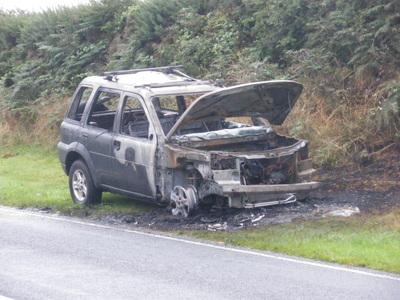Hi Andy, do you remember I posted something about a small electrical fire late last year, that was associated with the PTC heater, so I've researched it and became something of an expert on that subsystem, and basically it will / should still work on 2 out of three of the elements, as in the 2/3rds toper you men
tion.
However, I'd suggest you tread very carefully with this particular circuit!
The circuit is basically, microswitch spurred off the heater operated by a cam on temperature knob, this then allows current to flow to the controlled side of a relay that is closed when the fuel pump is on, so this system cannot receive power without the engine running. the output of that first relay then energises the solenoid of a second relay, located behind the ecu compartment, on the scuttle panel, in the engine bay. This second relay takes its supply from an 80a fusable link connected to the battery by an eyelet connector bolted on the positive clamp, it runs as a single wire underneath the ECU's and into that relay on the scuttle panel. When energised, that relay on the scuttle panel sends power to the little three position fusebox, splitting from a single wire through two splices to three wires witihin the loom running under the ECU compartment. One wire goes to each blade fuse holder, then from that fusebox, power runs into the cabin in 3x wires, the outputs from that fusebox run back along the same loom over the inner wing, up to the scuttle panel and through the bulkhead whereafterwith a wire each for the three heater elements.
80a supply over 3x 30a fuses = 26.6a each circuit. If you remove one fuse, because its melted, you are isolating / disconnecting one of the three heater elemtents, the load on the circuit. But you still have 80 amps available, now going to only a pair, rather than a trio of 26.6a circuits. That 80a is a lot of power and coming from a compromised circuit, I mean why have the fuses melted rather than blown? Heat. Heat generated by current flowing through bad, high resistance circuitry. By removing that one fuse, thus disconnecting one heater element, you are effectivley adding an additional 50% available power to the other two branches on that circuit. I know from my research into PTC that others have issues with the relay on the scuttle panel getting charred, this being the one that controls the supply from the 80a fusable link that feeds the three slot fusebox in which you have a melted fuse.
An 80a circuit is a lot of juice, its a full kilowatt with an alternator running at nominal 13 volts.
If you have a fuse melted in the PTC fuse box, you really ought to replace that box, check the PTC relay on the bulkhead, clean up all the contacts from battery terminal --> fusable link --> wire from fusable link to relay --> wires from relay to splices --> splices to fusebox --> fusebox to PTC heater.
You need to do that to make sure you dont continue to have the resistance turn the juice into heat and go melty / smokey / firey burny.
Personally I've mentally named the PTC as Pyro Technic Circuit.
Not meaning to be all doom and gloom, I know its far too easy for us jocks to be portrayed as:
But it is a high current circuit on a ~20 year old vehicle, that is starting to show signs of its age, and I'd really rather you thoroughly check out your 1kw electric heater, that uses about the same power as one bar on an electric fire, so it functions more like this sort of electric fire:
than this type of electric fire:
Remember when mine went I had started the car to let it heat up before driving it, and went back inside, it was only by luck that I went out to put something in the car to take with me, and I could hardly see the car for smoke. While I was lucky enough to catch mine, I was probably only a couple of minutes away from mine going up like the one in that picture above.




